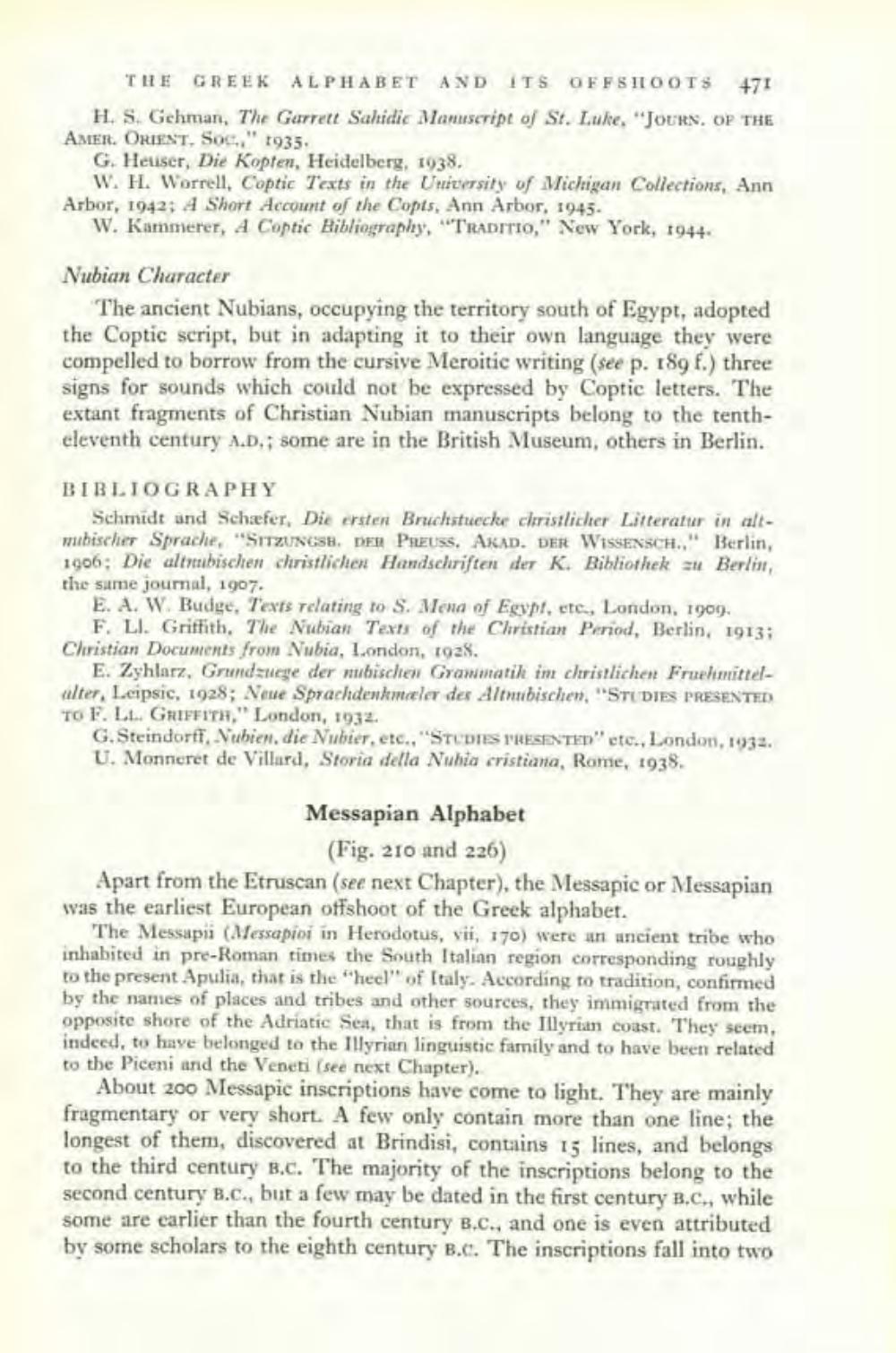________________
THE GREEK ALPHABET AND ITS OFFSHOOTS 71
H. S. Gehman, The Garrett Sahidic Manuscript of St. Luke. "JOURS. OP THE AMER. ORIENT. Soc., 1935
G. Heuser, Die Kopten, Heidelberg, 1938.
W. H. Worrell, Coptic Texts in the University of Michigan Collections, Ann Arbor, 1942; A Short Account of the Copts, Ann Arbor, 1945.
W. Kammerer, A Coptic Bibliography, "TRADITIO," New York, 1944.
Nubian Character
The ancient Nubians, occupying the territory south of Egypt, adopted the Coptic script, but in adapting it to their own language they were compelled to borrow from the cursive Meroitic writing (see p. 189 f.) three signs for sounds which could not be expressed by Coptic letters. The extant fragments of Christian Nubian manuscripts belong to the tentheleventh century A.D., some are in the British Museum, others in Berlin.
BIBLIOGRAPHY
Schmidt und Schäfer, Die ersten Bruchstuecke christlicher Litteratur in altmubischer Sprache, "SITZUNGSB. DER PREUSS. AKAD. DER WISSENSCH, Berlin, 1906: Die altsubischen christlichen Handschriften der K. Bibliothek zu Berlin, the sume journal, 1907.
E. A. W. Budge, Texts relating to S. Mena of Egypt, etc., London, 1909.
F. LI. Griffith, The Nubian Texts of the Christian Perod, Berlin, 1913; Christian Documents from Nubia, London, 1928.
E. Zyhlarz, Grundzucge der nubischen Grammatik im christlichen Fruehmittelulter, Leipsic, 1928; Neue Sprachdenkmeler des Altnubischen, "STUDIES PRESENTED TO F.LL. GRIFFITH, London, 1932.
G. Steindorff, Vubien, die Nubier, etc., STUDIES TRESENTER"ete., London, 1932. U. Monneret de Villard, Storia della Nubia cristiana, Rome, 1938.
Messapian Alphabet
(Fig. 210 and 226) Apart from the Etruscan (see next Chapter), the Messapic or Messapian was the earliest European offshoot of the Greek alphabet.
The Messapii (Messapioi in Herodotus, vii, 170) were an ancient tribe who inhabited in pre-Roman times the South Italian region corresponding roughly to the present Apulia, that is the wheel" of Italy. According to tradition, confirmed by the names of places and tribes and other sources, they immigrated from the opposite shore of the Adriatic Sea, that is from the Illyrian coast. They seem. indeed, to have belonged to the Illyrian linguistic family and to have been related to the Piceni and the Veneti (see next Chapter).
About 200 Messapic inscriptions have come to light. They are mainly fragmentary or very short. A few only contain more than one line; the longest of them, discovered at Brindisi, contains 15 lines, and belongs to the third century B.c. The majority of the inscriptions belong to the second century B.C., but a few may be dated in the first century B.C., while some are earlier than the fourth century B.C., and one is even attributed by some scholars to the eighth century B... The inscriptions fall into two




